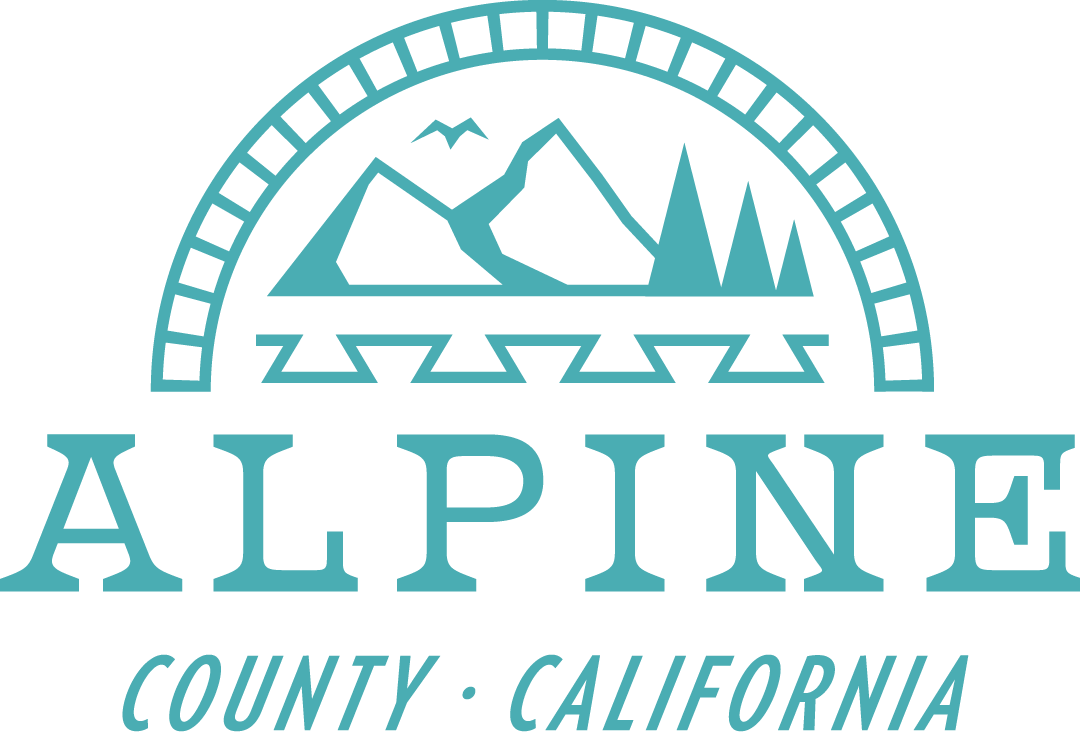For the next several years, the population grew, and while there was plenty of mining activity, there was a scarcity of paying ore. Nearby, the towns of Monitor and Mt. Bullion grew from the hills, fostered by the belief in another ‘Comstock’ just around the corner.
In 1861, one Jacob Markley took up a 160-acre claim and built a bridge and toll station on the banks of a stream crossing the road from Genoa, Nevada ten miles north of Silver Mountain City. Killed in a gunfight in 1863, Markley would give his name to the future County seat, Markleeville, and creek of the same name.
Bolstered by the much-ballyhooed silver boom, and fed by local politicians, Alpine County was created in 1864 from parts of adjacent counties, while the population had grown to more than 11,000. Miners also left the rich gold fields of Bodie only 80 miles away. Silver Mountain was the first County Seat of Alpine County. The excitement was short-lived. As the Silver Mountain ore proved too stubborn to recover at a profit, men began to leave the area, and by 1868, Alpine County had fewer than 1200 people. The finishing blow came with the demonetization of silver in 1873, collapsing prices and closing the remaining mines.
Markleeville stood ready to succeed its neighbor as County seat, which was accomplished in 1875. Despite its own loss of population, the town had begun to develop into a trade center for the ranching and lumber business, which was still supplying the booming Comstock Lode mines. In 1885, Markleeville suffered a terrible fire, but the town was quickly rebuilt. Several buildings, including the Fisk Hotel (formerly the Alpine Hotel) now the Wolfcreek Restaurant and the log jail were moved from Silver Mountain, though with a reduced population, many lots remained vacant.
Through the rest of the 19th century, Markleeville continued its role as the supply and shipping center for local ranchers and farmers.
By the 1920’s, the County population had dropped to about 200, then rebounded to 300 in the 1930’s with an increase in subsistence hunting and fishing. It wasn’t until the late 1960’s with the development of ski resorts at Bear Valley and Kirkwood that Alpine County’s population began to grow, eventually reaching near 1200 in the 1990 Census.
Today, Alpine County maintains its distinction as the least populated County in California. And, with 96% of its land in public ownership, opportunities for growth are few.
Despite its limitations, residents of Alpine County are quite content in their relaxed rural lifestyle, even boasting of the fact that the County has no traffic light, bank, movie theater, dentist, or supermarket. Today, most of the County’s income is derived from visitors from the booming tourism communities of Lake Tahoe and western Nevada, who seek out the County for its rich outdoor recreation. Fishing, camping, hiking, rafting, skiing and winter snow sports all contribute to an economy dependent on tourism. And yet, signs remain of Alpine County’s colorful past. From the ruined foundations at Silver Mountain to the sagging headframes of long-abandoned mines to the wagon ruts of the Emigrant Road, Alpine County is a living reminder of the ever persistent western frontier.
History of Alpine County
A land created by fire and ice; settled by hardy pioneers.
Alpine County’s history parallels the exploration of the West itself, and played an important role in the settlement of both California and Nevada.
The first to call Alpine County home were the native Washo people, who occupied the mountains and valleys of western Nevada and eastern California. Living in harmony with the land, the Washo excelled in basketry and spent their summers around the shores of Lake Tahoe, while a southern band of the tribe , the Hung Lel Ti, lived around the Diamond Valley area of Alpine County. The earliest explorers through the region included Jedediah Smith and Joseph Walker, but it was John Fremont and Kit Carson, in their famous mid-winter trip across Alpine County and the Sierra Nevada in 1844 that brought attention to possible travel routes across the range.
Followed in 1848 by members of the Mormon Battalion and a year later by the Gold Rush ’49ers, the Carson Route of the California Emigrant Road, now Highway 88, was the most heavily used road to California in those early years.
However, it took silver, not gold, to bring settlement to Alpine County. Following the discovery of the Comstock Lode near Virginia City in 1859, thousands of prospectors swarmed into the eastern Sierra Nevada looking for riches. A year earlier, a group of Scandinavian men had discovered rich silver outcrops near Silver Creek and established the town of Silver Mountain.
Alpine County Data
Size & Population
Total Area: Approximately 739 square miles (475,000 acres).
Land Ownership: Approximately 96% of the land is public; only 4% is under private ownership.
Population: As of July 1, 2024, Alpine County's population is estimated at just over 1,141 residents, making it the least populous county in California.
Elevation
Range: Elevations span from about 4,800 feet to over 11,400 feet.
Climate
Annual Precipitation: The county receives an average of 26 inches of rain per year.
Annual Snowfall: Alpine County averages 192 inches of snow annually.
Temperature Averages:
Winter: Mean maximum of 43.5°F; mean minimum of 23°F.
Summer: Mean maximum of 85.1°F; mean minimum of 53.3°F.
Please note that climate data can vary based on specific locations within the county and the period over which measurements are taken.

